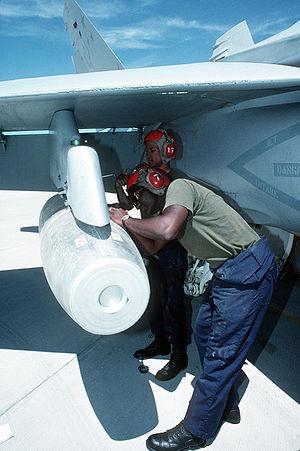^ The US never signed the ban on napalm and used it in Iraq. The Americans just changed the chemical ratio by a minute amount and changed the name of the bomb.
I think they now call it the Mark77 or or something like that.
And of course, when this napalm was used in Iraq, civilians would be the "collateral damage" at times.
http://en.wikipedia.org/wiki/Mark_77_bomb
Mark 77 bomb
From Wikipedia, the free encyclopedia
Jump to: navigation, search

A Mark 77 bomb being loaded on an F/A-18 Hornet, 1993.
The Mark 77 bomb (MK-77) is a US 340-kilogram (750 lb) air-dropped incendiary bomb carrying 416 litres (110 U.S. gal) of a fuel gel mix which is the direct successor to napalm.
The MK-77 is the primary incendiary weapon currently in use by the United States military. Instead of the gasoline, polystyrene, and benzene mixture used in napalm bombs, the MK-77 uses kerosene-based fuel with a lower concentration of benzene. The Pentagon has claimed that the MK-77 has less impact on the environment than napalm. The mixture reportedly also contains an oxidizing agent, making it more difficult to put out once ignited, as well as white phosphorus.[1][2]
The effects of MK-77 bombs are so similar to those of napalm that even many members of the U.S. military continue to refer to them as "napalm" bombs in informal situations. The official designation of Vietnam-era napalm bombs was the Mark 47.[3]
Use of aerial incendiary bombs against civilian populations, including against military targets in civilian areas, was banned in the 1980 United Nations Convention on Certain Conventional Weapons Protocol III. However the United States reserved the right to use incendiary weapons against military objectives located in concentrations of civilians where it is judged that such use would cause fewer casualties and/or less collateral damage than alternative weapons.[4]
Results 1 to 25 of 527
Thread: Military intervention in Syria
Threaded View
-
08-09-2013, 11:38 PM #11............
Thread Information
Users Browsing this Thread
There are currently 1 users browsing this thread. (0 members and 1 guests)







 Reply With Quote
Reply With Quote